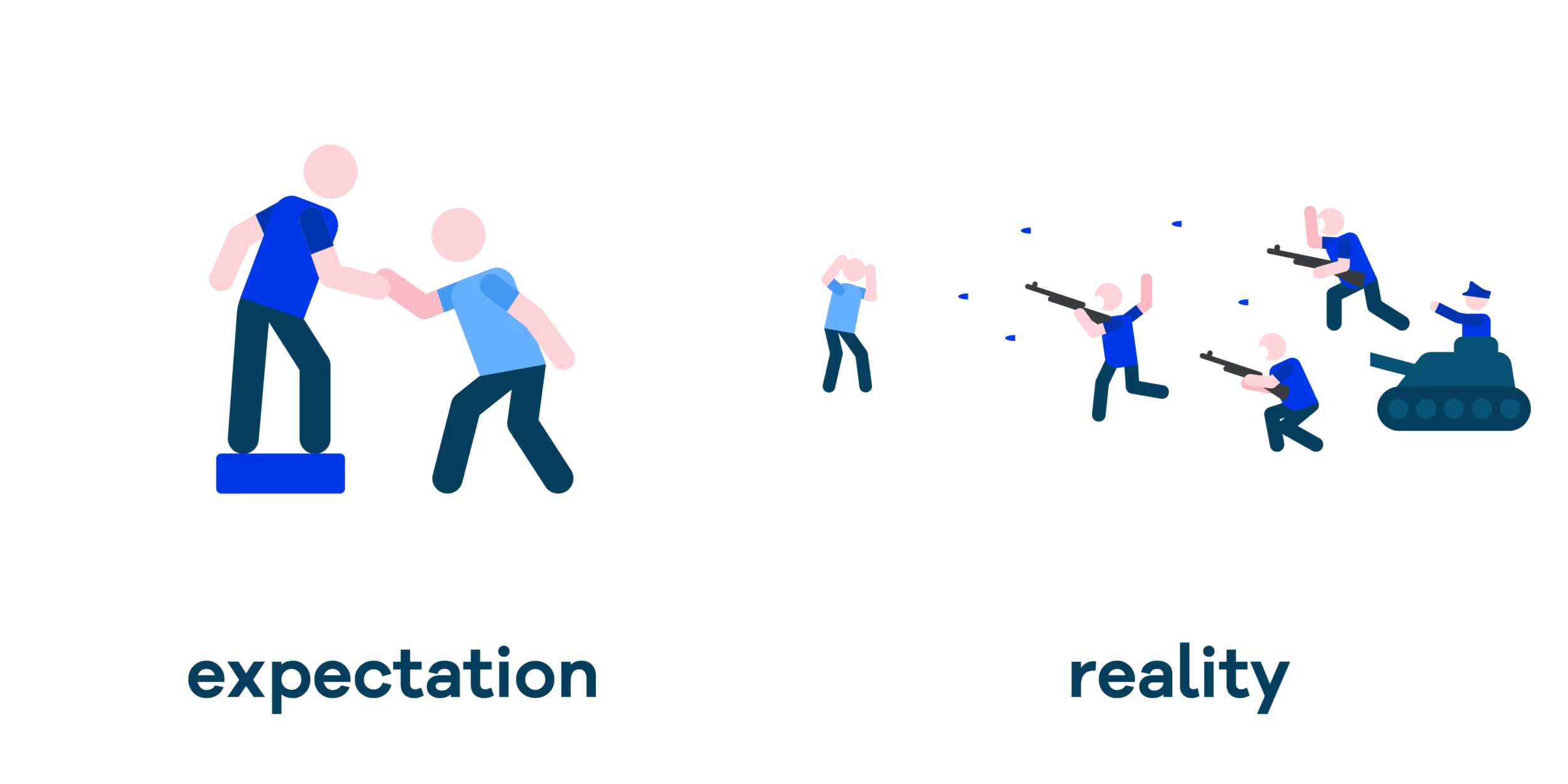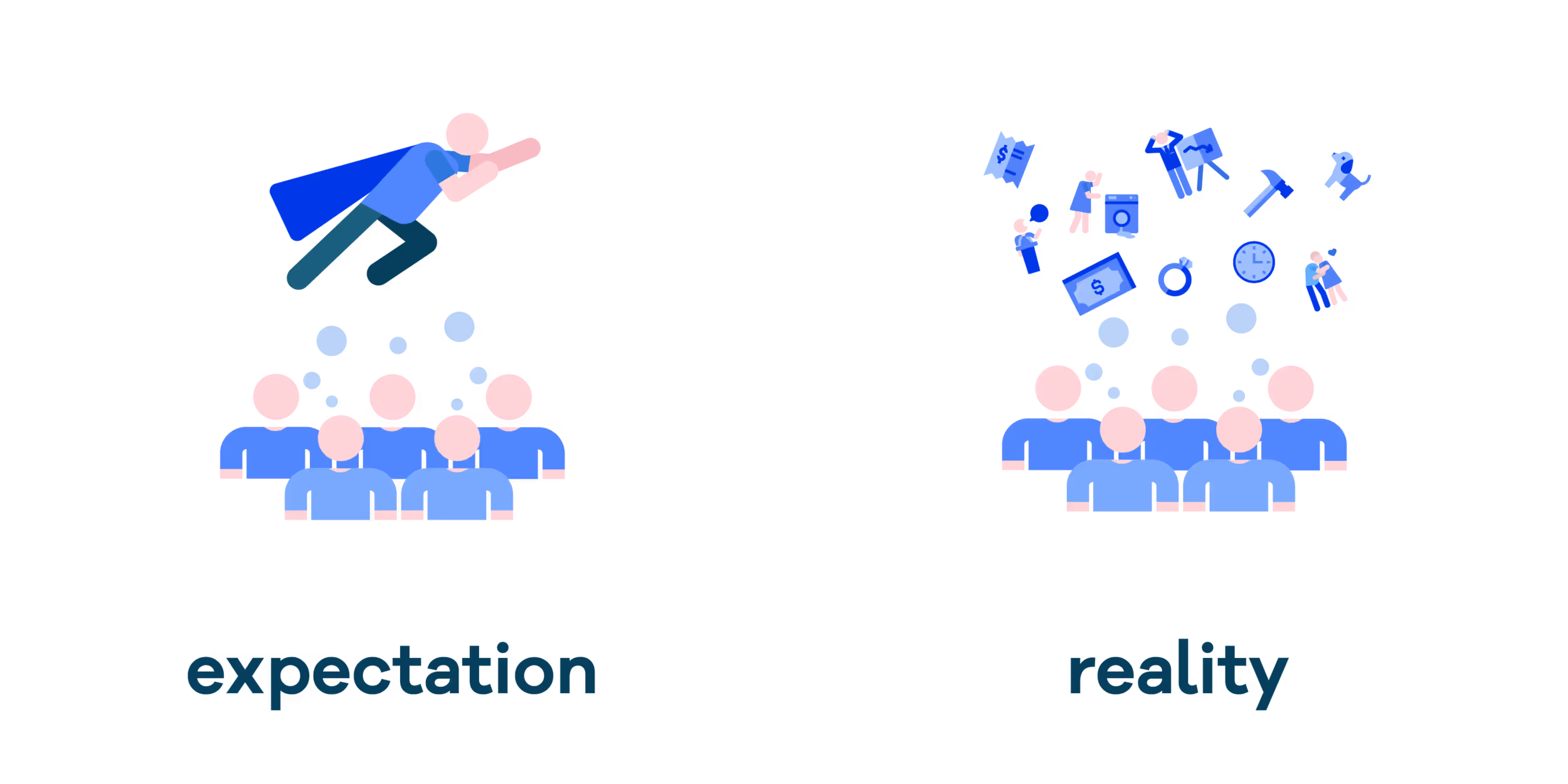Why are you really doing it?

As a designer in a world of non-designers, I get people asking me to help with their presentations. They want me to help arrange the information beautifully on the slide or create a beautiful image.
The first thing I ask them is “why are you doing this presentation?” and they answer, “They (the audience) need to know about [insert topic]”.
Nine times out of ten the answer is either “they need to know ‘’ or “they should know”. Unfortunately, adults have free-will and limited capacity of caring on any given day. So why should they use their free-will and precious caring capacity on you?
“Because it’s important” - quote from every person doing a presentation ever.
Before you respond “because it’s important” ask yourself — who is it important to and why?

If your sentence sounded something like “It is important to my audience because they need to know how/why…” then I can promise you it is not important to your audience — it’s important to you.
Team A creates the content that is fed and displayed on the website Team B is building.
Emma from Team B asked Brian if he could explain the content to them because they don’t know anything about it as they are website builders — not content makers.
Brian seized this opportunity because Team B are currently using an inferior source of content and Brian wants to provide them with the best source of content instead — this is the perfect opportunity to help them realise the error of their ways.

This is the exact moment where Brian has stopped thinking about what his audience wants and instead started thinking about what he wants. Brian has created an ‘us’ versus ‘them’ reality where they, Team B, are now the enemy that must be attacked by showing then unshakeable facts and global proof of Team A’s righteous crusade.
It can be hard to work out how to be user-centric and achieve your goals. Because let’s be honest — we are not Mother Teresa and we are never going to do a presentation ‘purely for the user’ - just like we are never going to make a product ‘purely for the user’ (hint: we make products to make $$$). Being human-centric doesn’t mean we give up on achieving our personal goals, it means balancing them.
How do we do this? We ease into it.
Work you’re way through completing these sentences:
- ________ [insert audience] need to know about ______ [insert topic].
- The audience’s cares about achieving _______ [insert what their job is]and are having problems with _______ [insert the specific component that they are trying to achieve].
- I can help them solve their problem by ___________ [insert what information you have that can help them solve it].
- To use my solution they will need to ______ [list all the jobs they will have to do to implement your goal].
Now for the grand finale… put it all together!
My presentation about ________ [topic] will help _______ [audience] achieve _______ [their problem] so that they can reach their goal of ________ by ___________ [what you will talk about — all the jobs your audience need to do to implement your solution and how to do them].
This will help you keep the “why am I doing this presentation” at the forefront of your mind (for both you and your user) and will help you prioritise the presentation. Let’s see how Brian used it:
- Team B needs to know about the complexity of the content and that not all content stores are the same quality.
- The audience’s cares about achieving the development of the website and are having problems with the search functionality showing no results when content is searched.
- I can help them solve their problem by providing them with a better content database that will give them more search results.
- To use my solution they will need to build an importer to consume my content database and understand the way the content is put together
“My presentation about my new content model will help Team B achieve an optimal search function so that they can reach their goal of developing a great website by importing and using content in a modern format instead of using an old format not built for the modern age of information systems.”
Once you have identified why you are doing the presentation (your goals and the goals of your audience) you can begin to structure a story specifically to meet the needs of your audience while sneaking in your personal motive.

Team B responded to Brian’s presentation, “we knew we needed content but we never understood why — now I know why we need it and how we can use it.”
There is never one exact way to do things. Especially when it comes to connecting with your audiences and storytelling. I would love to hear how your experiences of developing audience-centric presentations that achieve your personal motives occurred — and of course any experiments of using this methodology!
Photo by Hal Gatewood on Unsplash






